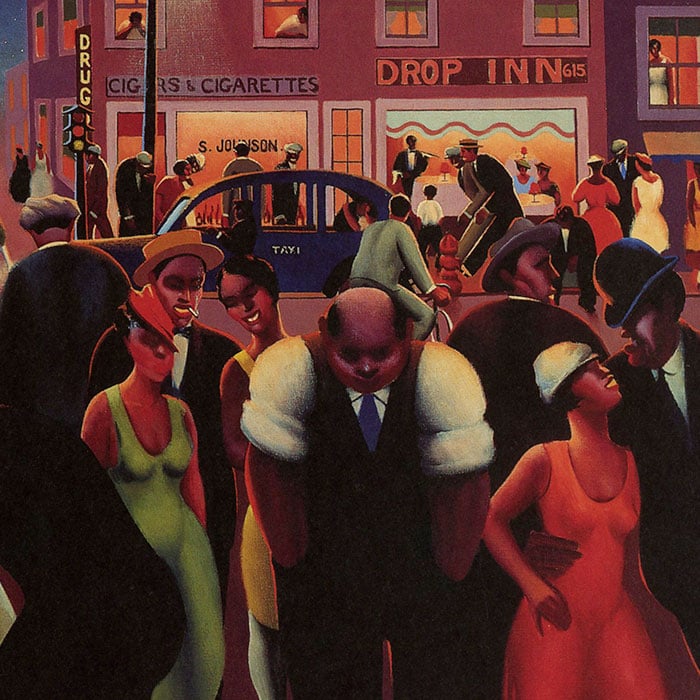Archibald Motley, Jr.

The painter Archibald Motley, Jr. is famous for his paintings of his fellow African Americans in Chicago’s Bronzeville, but he himself didn’t live there. Despite – in some ways because of – his desire to address the race problem through his painting, he had a complicated relationship with his race.

Most buyers of his paintings were white, and he remained aloof and apart from Chicago’s black artistic communities, living in a predominantly white neighborhood. (“So many colored artists discouraged me,” he said in an interview late in his life. “My encouragement all came from white people.”) While he wished to dispel stereotypes by providing positive portrayals of African Americans, he also expressed frustration with what he saw as their indifference towards fine art: “I’ve found that my race was the most critical of critics that I had and they knew less about art than anybody else… [I] was trying to get their interest in culture, in art.”
Motley was of multiracial heritage, with ancestors of African American, European, Creole, and Native American descent. Born in New Orleans in 1891, he came with his family to Chicago in 1894, where his father worked as a Pullman porter. One of his father’s acquaintances paid for one year of his study at the School of the Art Institute of Chicago; Motley worked as a janitor in the museum to pay for his three remaining years. Upon graduating in 1918, he tried to establish a career as a portrait painter but had difficulty receiving work from wealthy white patrons because of the color of his skin. “You’ve got to have guts,” he once said, “and the Negro artist more so than any other artist because you know yourself that there are so many obstacles that you have to overcome.”



Watch: Painter Archibald Motley, Jr.
He received several awards on the strength of his distinguished portraits of African Americans, however, and in 1928 he had a solo show in New York at a time when few black artists had exhibited in that city alone; so few that Motley's 1928 show has often been incorrectly touted as the first solo show by an African American in New York. The following year he went to Paris on a Guggenheim Fellowship, and upon his return to Chicago he turned towards vibrant, jazzy portrayals of Bronzeville’s nightlife. It was with these innovative paintings that Motley gained a reputation as a Chicago participant in the cultural blossoming of the Harlem Renaissance. He worked for the Easel and Mural Division of the Works Progress Administration in the 1930s and ’40s, but in the 1950s, his work began to fall out of favor, and he was forced to paint shower curtains to eke out a living.
He lived in Chicago most of his life; he said in an interview two years before his death in 1981, “I can’t find any place like Chicago. You know, I love this place.” Throughout his career he tried to show his fellow African American “in his true perspective, with dignity, honesty, integrity, intelligence, and understanding,” as he wrote in an essay. He summed it up in that late interview: “I’ve always wanted to paint my people just the way that they were.”





